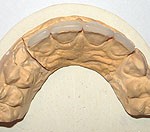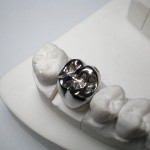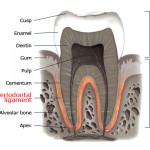Saliva is a complex fluid found in the mouth consisting of a mixture of secretions from the major salivary glands and the minor glands of the tissues in the mouth. Majority of saliva is produced by the three pairs of major glands – the parotid, submandibular, and sublingual glands. The rest of it is produced by thousands of minor salivary glands distributed throughout the mouth and throat. Continue reading
Tag Archives: sensitivity
The Side Effects of Veneers
Dental veneers are a thin coating of ceramic that is placed over the tooth on the outer side of the tooth. The placement of veneers on your teeth will give you a brighter smile and improve the appearance of your teeth. The cosmetic treatment consists of thin, customized, tooth-colored shells that qualified dentists bond to the outer surface of teeth. Dental veneers can correct problems related to the color, length, size and shape of teeth when properly constructed and attached. Continue reading
The Disadvantages of Metal in Tooth Caps
Dental caps in general add a good deal of strength to a weakened or worn tooth, and if all conditions are favourable, a good tooth cap can last ten to fifteen years. Depending on your habits and the condition of your gums, there may be some drawbacks or benefits for you. Your dentist will advise which is best for you given several factors, such as how important appearance is to you. A tooth cap, also known as a dental crown, is a covering placed over a tooth and cemented into place. Materials used to make tooth caps include metal, resin, porcelain, or a combination of ceramic and metal. Continue reading
What to Expect During a Teeth Cleaning Appointment
A teeth cleaning appointment is also known as scaling. Every now and then every one of us would need a thorough scaling, because no matter how well we brush and floss and rinse, there will still be some minute debris left in our mouth between our teeth. These debris, after some period of time, will become hardened and these are known as calculus. There are two types of scaling – supragingival scaling, and subgingival scaling. Supragingival scaling is when the dentist only clears away the calculus that are above our gums, and can be seen in plain view. However, subgingival scaling is when the dentists cleans the calculus that are 1 – 2 mm below the gums. Sometimes, scaling is not sufficient for some patients with severe gum conditions, and root planning will be needed. Usually, root planning is needed when there is a gingival pocket more than 4 -5 mm, and there are tenacious calculus and necrotic cementum (refer to the picture to understand what is cementum) stuck to the roots of the teeth. Continue reading



